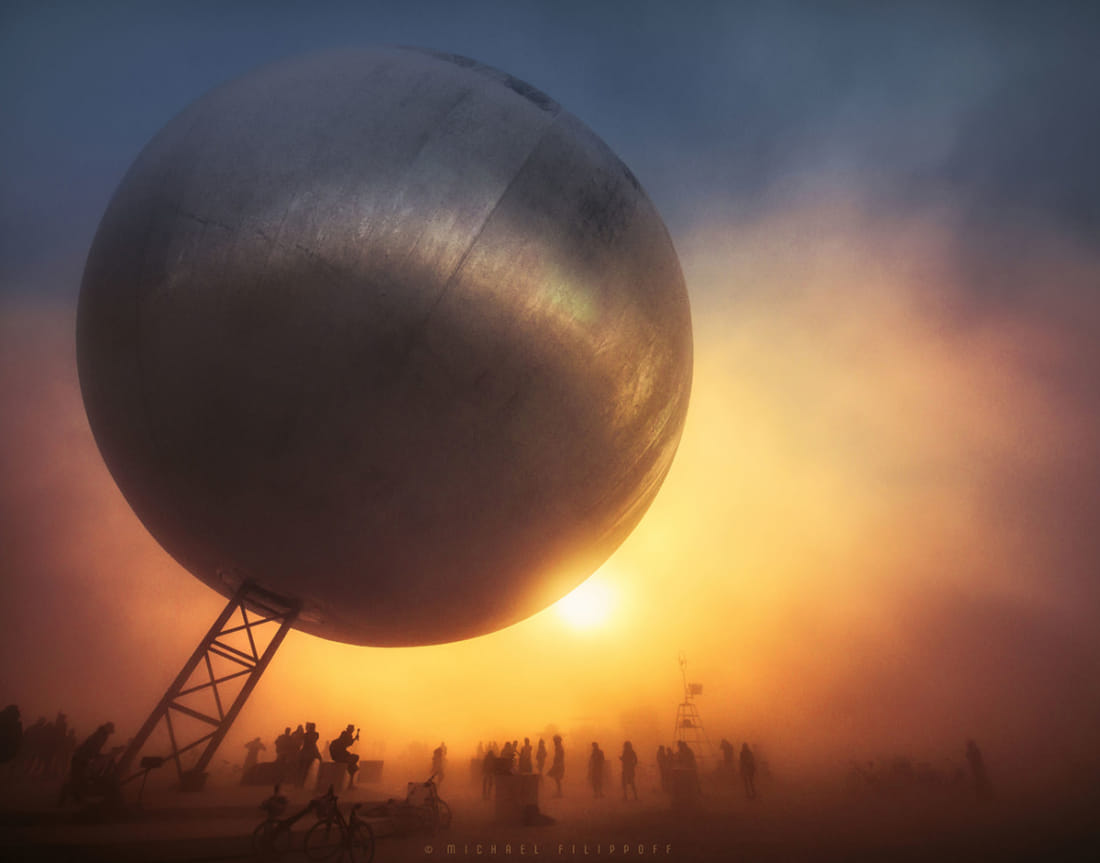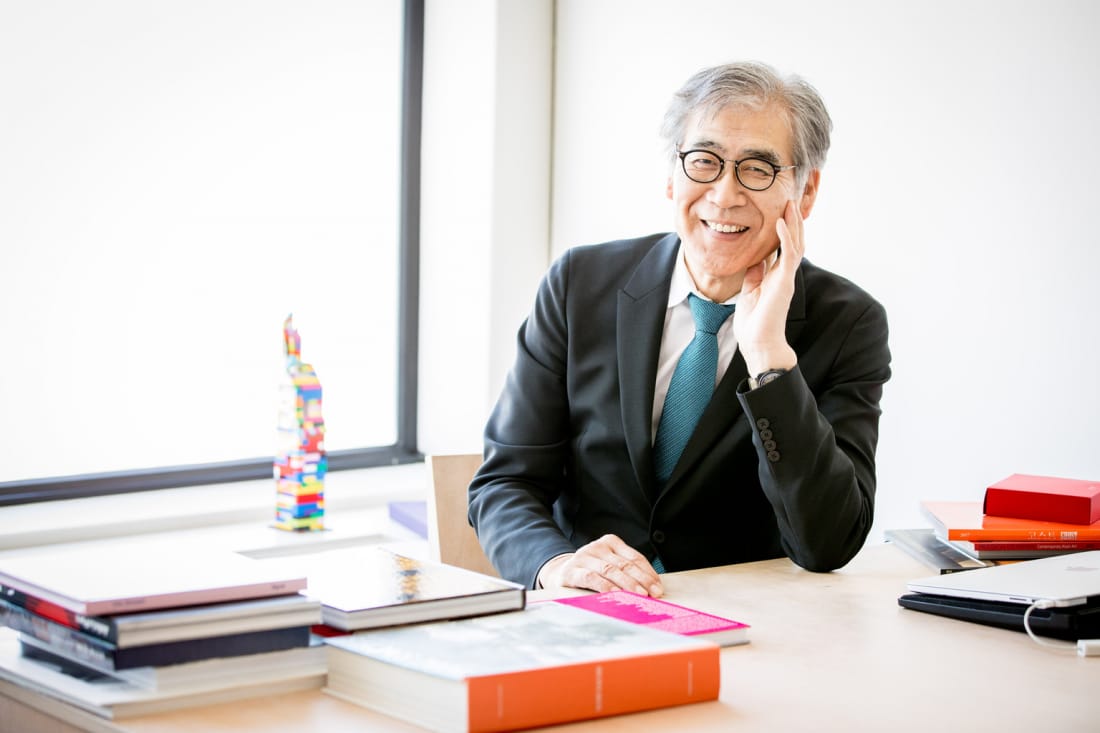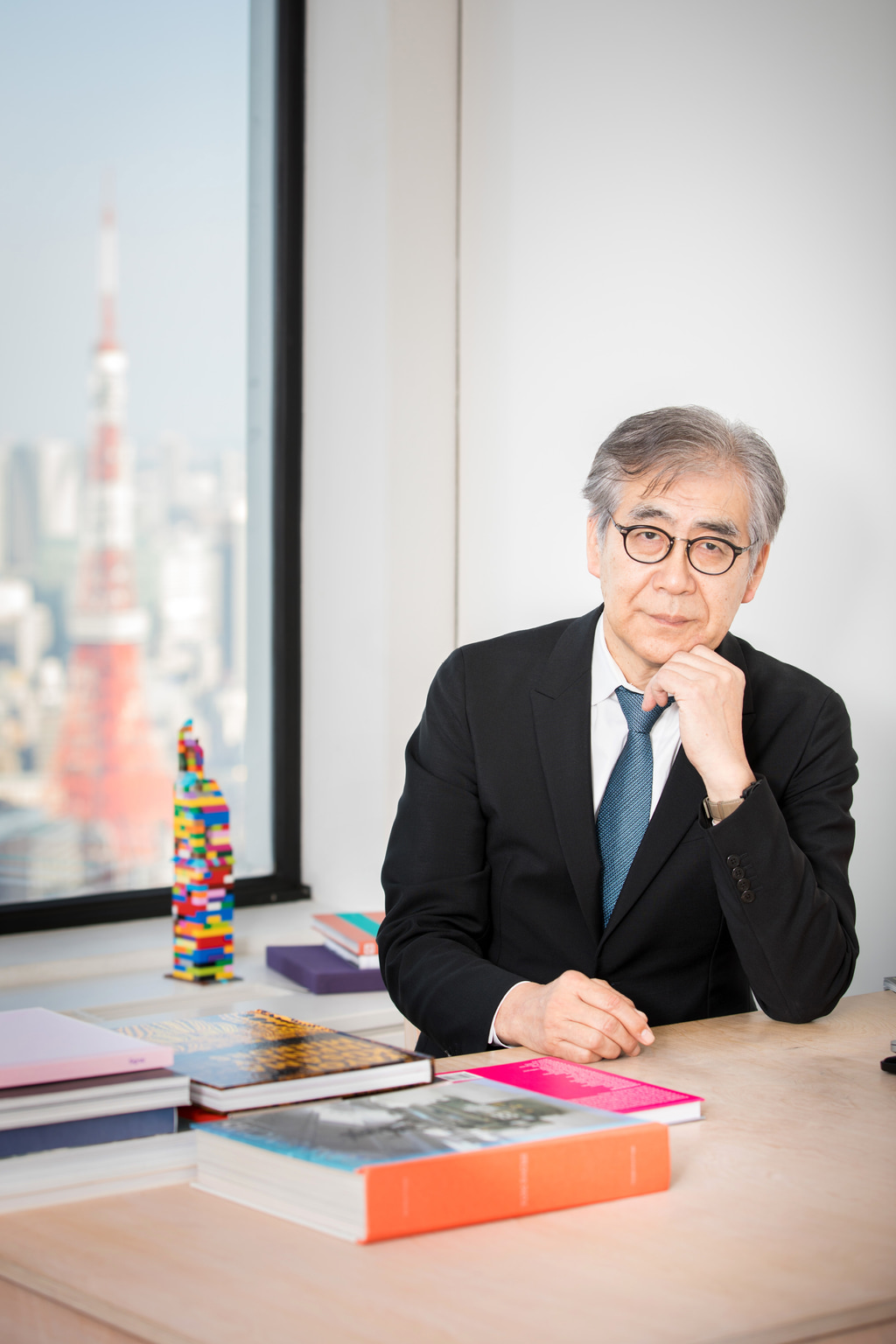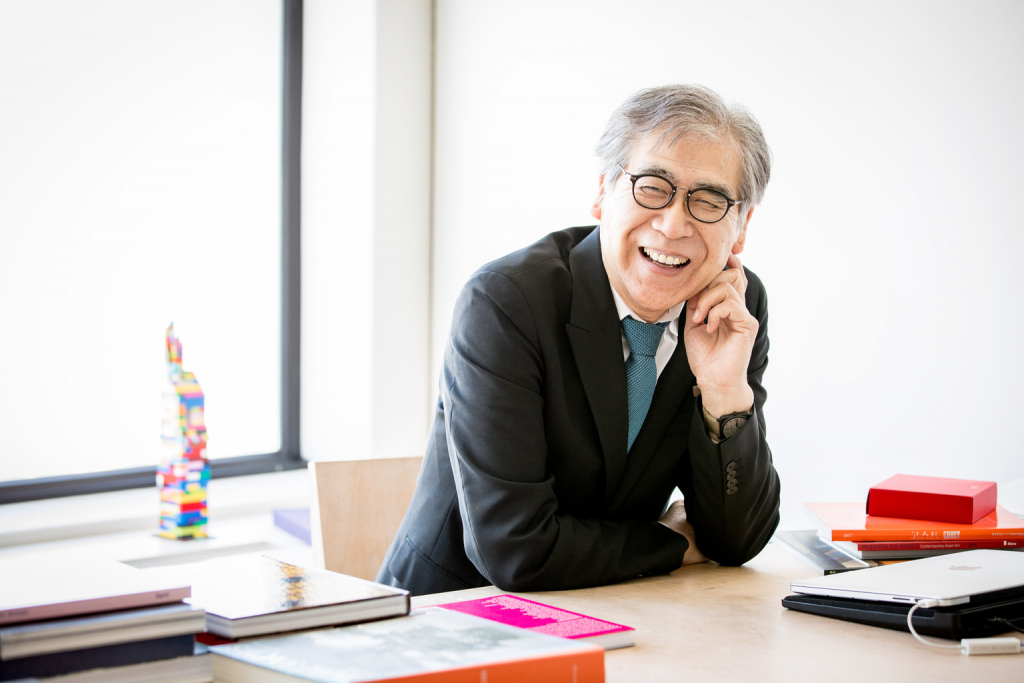Even though the latest Mori Art Museum exhibition curated by Fumio Nanjo closed prematurely to help prevent the spread of coronavirus, you can still take an online virtual tour hosted by the museum’s esteemed former director.
The first section of the exhibition, titled Future and the Arts: AI, Robotics, Cities, Life – How Humanity Will Live Tomorrow, studies the new possibilities of cities, noting that cities may develop an organic organizational structure not unlike that proposed by members of Japan’s post-war Metabolism architectural movement.
In a video presentation on the virtual tour, Nanjo takes this idea one step forward, comparing Metabolism, in which sections of buildings are designed to be replaced, to that of biotechnology, and how modern soft technologies can manipulate the human body to adapt to any purpose.
“Biotechnology can change our human body and our lengths of life. If life is longer and longer, the meaning of things change,” the real-life Nanjo tells us in a meeting room next to his old office in the high reaches of Mori Tower. “We really have to think, what is this meaning?”

Bjarke Ingels and Jakob Lange, The Orb, 2018, Photo: Michael Filippoff
One of the world’s foremost experts on contemporary art, Nanjo was the director of Mori Art Museum from 2006 until his retirement this past January. The Tokyo native has a knack for predicting technology’s effect on our future. In the mid-1970s he quit his first job after one year at a major trust bank when he realized computers would make his job obsolete. Returning to Keio University, he earned a degree in the faculty of Letters and turned his passion for art into a stellar career.
Nanjo sat with TW to discuss the future role of contemporary art, the future of Tokyo and the future meaning of life.
Mr Minoru Mori, founder of Mori Art Museum, invited you to help establish the museum in 2003. I understand you originally disagreed with his vision?
I did not disagree with him. He was trying to make a museum as a business, but at the same time he wanted to focus on contemporary art, and doing both was often difficult. At that time Japanese department stores were exhibiting Impressionism because it’s the easiest way to attract people. So when Mr Mori expressed his ambition to make a museum as a business, and also to show contemporary art, I said it has never happened in the past. But he was sure that this museum should be focused on contemporary art. I think he wanted something new, a new image, a new style, new information. Roppongi Hills must be a cutting-edge center of culture.

Photo by Tayama Tatsuyuki, courtesy of Mori Art Museum
As director, how did you try to meet his vision?
I specialized in contemporary art. If it was about Impressionism or Japanese-style painting, then I wouldn’t join because it is not my field. I was already exhibiting Mario Melz and other artists in Nagoya [Nanjo was director of Institute of Contemporary Arts in Nagoya from 1986 to 1990], which is a cutting-edge contemporary art space, so I continued in that way. [At Mori Art Museum] the exhibitions are a bit modified for the general public.
How has Japan’s perception toward contemporary art changed over the course of your career?
“Art is for life. Art is with life”
It has very much changed. Contemporary art is not a difficult thing to understand. Sometimes it is more fashionable, or more accessible, or enjoyable, and is something one can easily get engaged in, like Leandro Erlich…. Before, art [in Japan] was something to learn and study. Art museums are under the education department of each local government. It is considered a matter of education. We put it forward as a matter of entertainment of life. Art is for life. Art is with life. Art should be enjoyed in the life. That was the message we tried to release.
What is the message you wish to share through your latest exhibition?
The message is that the future is not coming automatically. We are making it by hand. We have to be aware of that, and depending on what our decisions are, the future will be different. So, I think we have shown [in the exhibition] many technologies which may change our life in the future. Some of them do not promise us a good future. We have got be very careful what we do now. That’s one message.

Photo by Tayama Tatsuyuki, courtesy of Mori Art Museum
Based on what you learned through the curation process, what cutting-edge developments in science and technology will have the greatest effect on human lives of tomorrow?
We have to think philosophically, not just about technology or convenience or practices of life. What is a human being? Which is a very philosophical question. Paul Gauguin titled his painting, “Where Do We Come From? What Are We? Where Are We Going?” This question is now becoming very important in the current situation, because we can do anything by technology. AI is one.
But there is also biotechnology…. If you want to send a human to Mars, you have to travel more than two years in a spaceship, then you consume oxygen and food. So biotechnology can change your genes, like the people in Tibet or Nepal, where you don’t have to consume so much oxygen. By this way you can send people to Mars. Then when this guy stands on Mars, we say, “Oh, human beings have landed on Mars for the first time.” But it isn’t a human being. He is something else. He is not the same as us. He is post-human. So what is this meaning?
What role does contemporary art play in this future?
“Art cannot provide solutions to those questions, but art can question those people”
Art cannot provide solutions to those questions, but art can question those people. At the same time, art is changing. Even in this exhibition, about half of the exhibits are displays of technology. Some people don’t call it art. How do you define art? Nobody has defined art clearly. Art is somehow creative thinking. Questioning the issues of our reality. Science is the same. Science is trying to answer these questions by logical thinking and experiment. Art is trying to answer by intuition. They share the same question, art and science. That is why I put them together. By this way, I am expanding the boundary of art – maybe.
What is the future of Tokyo?
I think Japan itself lost the direction, or the aim of the economy. The mass production period is over already. It has all shifted to China or India and so on…. Creative business is always prosperous in a big city. Tokyo must play that role. Tokyo must be open to the creative class, and international creative business. For that we should have good food, good accommodations, good conditions for offices – any kind of choice should be possible. If Tokyo becomes the center of creative business, Tokyo can survive.
To view the “Future and the Arts” virtual tour, go to tinyurl.com/mori-tour
Feature photo by Tayama Tatsuyuki, courtesy of Mori Art Museum









